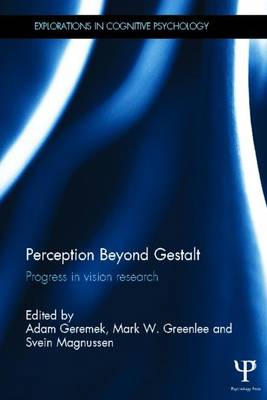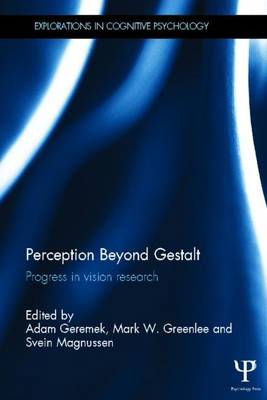
- Afhalen na 1 uur in een winkel met voorraad
- Gratis thuislevering in België vanaf € 30
- Ruim aanbod met 7 miljoen producten
- Afhalen na 1 uur in een winkel met voorraad
- Gratis thuislevering in België vanaf € 30
- Ruim aanbod met 7 miljoen producten
Perception Beyond Gestalt
Progress in Vision Research
Omschrijving
How does the brain piece together the information required to achieve object recognition, figure-ground segmentation, object completion in cases of partial occlusion and related perceptual phenomena?
This book focuses on principles of Gestalt psychology and the key issues which surround them, providing an up-to-date survey of the most interesting and highly debated topics in visual neuroscience, perception and object recognition.
The volume is divided into three main parts: Gestalt and perceptual organisation, attention aftereffects and illusions, and color vision and art perception. Themes covered in the book include:
- a historical review of Gestalt theory and its relevance in modern-day neuroscience
- the relationship between perceptive and receptive fields
- a critical analysis of spatiotemporal unity of perception
- the role of Gestalt principles in perceptual organization
- self-organizing properties of the visual field
- the role of attention and perceptual grouping in forming non-retinotopic representations
- figural distortions following adaptation to spatial patterns
- illusory changes of brightness in spatial patterns
- the function of motion illusions as a tool to study Gestalt principles in vision
- conflicting theories of color vision and the neural basis of it
- the role of color in figure-ground segmentation
- chromatic assimilation in visual art and perception
- the phenomena of colored shadows.
Specificaties
Betrokkenen
- Uitgeverij:
Inhoud
- Aantal bladzijden:
- 236
- Taal:
- Engels
- Reeks:
Eigenschappen
- Productcode (EAN):
- 9780415658010
- Verschijningsdatum:
- 8/08/2013
- Uitvoering:
- Hardcover
- Formaat:
- Genaaid
- Afmetingen:
- 157 mm x 231 mm
- Gewicht:
- 476 g

Alleen bij Standaard Boekhandel
Beoordelingen
We publiceren alleen reviews die voldoen aan de voorwaarden voor reviews. Bekijk onze voorwaarden voor reviews.










